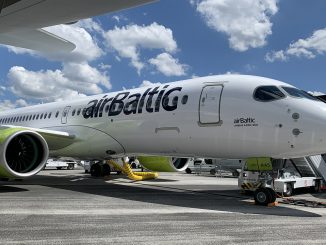
At 0910am on 25th August 1919, an Airco DH. 4A operating for Air Transport and Travel Ltd. (AT&T) took off from Hounslow Heath Airport in London, bound for Le Bourget Airport in Paris. It was the first international commercial flight of the brand that would become British Airways today. The flight took 2 hours 30 minutes, carrying a single passenger, Evening Standard newspaper reporter George Stevenson-Reece.
Early days
The evolution of the brand since that first historic flight has been complex. AT&T itself lasted merely 15 months, when in 1920 it was purchased by Daimler Airway, itself a subsidiary of BSA – Birmingham Small Arms’ own Daimler Company. In December 1920, AT&T ceased operations as its own entity and officially became Daimler Airway. The brand remained as such until April 1924, when Daimler Airway merged with British Marine Air Navigation, Handley-Page Transport and Instone Air Line to form Imperial Airways.
With the birth of Imperial Airways, the mark of an aviation legend was born. The British brand was the main European rival of US aviation pioneer Pan American World Airways, and set about mapping routes around the world as the flag carrier of the then British Empire. Imperial Airways’ logo was the ‘Speedbird’ a mark which would become synonymous with the brand throughout the rest of its 95 year history.
The British Airways name however, started on a parallel timeline. In 1935, Hillman’s Airways, United Airways and Spartan Air Lines merged to form British Airways Ltd. In November 1939, just after the outset of the Second World War, Imperial Airways merged with British Airways Ltd. to form another new airline: British Overseas Airways Corporation, known also as BOAC. The new flag carrying airline kept the Speedbird logo, and with it adopted the callsign ‘Speedbird’, which continues to be used by British Airways to this day.

The British Airways of today
In 1974, BOAC merged with British European Airways (BEA), to form today’s British Airways. The BEA airline was itself was born in 1946 and as its name suggested, flew short and medium haul inter-european routes. An interesting tidbit of information about BEA is that while the airline had many hubs in the UK, its only hub abroad was the now defunct Tempelhof Airport in Berlin, forming British Airways’ historic connection with Germany – even forming a subsidiary, Deutsche BA (later ‘dba’), which ultimately ended up as part of the also now defunct Air Berlin.
In 2011, Spanish flag carrier Iberia merged with British Airways to form International Airlines Group (IAG), which is now one of the world’s largest airline group. Subsequently going on to own Irish flag carrier Aer Lingus and low cost airlines Vueling and Level, only the business end of the two airlines were merged and all of the IAG airlines have kept their own identities.
While British Airways always has, and continues to use the callsign ‘Speedbird’, the logo itself was adapted to the ‘Speedwing’ in 1984 with the introduction of the Landor Livery. In 1997, this again changed to the ‘Speedmarque’ of the Chatham Dockyard livery of today.
Matt is a Berlin-based writer and reporter for International Flight Network. Originally from London, he has been involved in aviation from a very young age and has a particular focus on aircraft safety, accidents and technical details.



